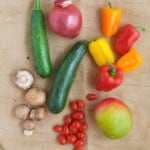
You might not have ever directly wondered, "Is our food safe ?", but perhaps you've asked one of these questions:
- Is conventional produce safe or is organic safer?
- Are "commercial farms" scary places that cause harm to the planet and our health?
- Is buying local food the best way to "stick it to the man"?
Did one of those hit home more?
This post is sponsored by the Alliance for Food and Farming. All opinions are my own.

The topic of food safety is a big one with many, many different components. Food safety involves the whole system from when a food is grown, harvested, packed, shipped, purchased, prepared and eaten. There are many opportunities in that chain of events for something to go wrong.
There are A LOT of opinions on what is actually happening in the world of agriculture. The media loves a good, juicy soundbite that makes us consumers think that agriculture is all messed up and producing problem after problem.

In mid September of 2021 I had the privilege of touring the agriculture scene in Oregon, specifically apple, pear and cherry orchards as well as a blueberry farm. All of these were commercial operations that grow food to feed the US and beyond. I learned so much, as I always do when I meet our domestic farmers, and it gave me great confidence in the work they are doing to feed us.
Jump to:
Farm Tour Stops

Over the course of 2 days I visited 4 different farms and packing facilities.
McCarthy Family Farm - pear and apple family farm who supplies pears to Duckwall Fruit
Mount Adams Fruit - packinghouse and orchards (apple, pear and cherry)
Hoffman Farms blueberry farm - commercial berry farm, u-pick operation, and Farm Store
Here are the highlights of my learnings from my trip that help me answer a hardy "yes!" to the question, "is our food safe?"
US Apples & Pears Facts
I didn't know a whole lot about these fruits until this trip. Here are interesting facts about US grown apples and pears:

- 90% of US fresh pears and 65% of US apples are grown in the Pacific Northwest.
- 80% of US cherries are grown in the Pacific Northwest.
- Apples are elevation sensitive and need cold nights and arid climate to thrive. This helps reduce the impact of bugs and fungus.
- Oregon is a great place to grow apples and pears because of it's mountains (Mt. St. Helen, Mt. Hood, and Mt. Adams), volcanic soil, elevation and water.
- An orchard takes about 6 years to cultivate before it is profitable, producing enough fruit to go to the marketplace. Farmers are planning 7 years ahead to be future minded in their business.
- Many of the farming operations in Oregon (and beyond) are "family run farms". They are big operations, but at the helm is a dedicated family who has been doing it for decades. (On a personal note, I was very impressed by how each farmer knew the names of nearly every employee he/she encountered.)
Organic AND Conventional Produce
Notice I did not say "organic versus conventional" or "organic or conventional". This is often the narrative in the media, or even in your mind, but it really shouldn't be. Both of these systems exist to solve problems and feed people. They can both be viable options for producing healthy, safe food.

Here are some helpful facts, learned from the farmers and researchers on my trip, about organic and conventional farming that will equip you to make decisions for you and your family.
- There is a lot of misinformation and misunderstanding by consumers about organic farming. Organic farming practices utilize pesticides. Some of these can be synthetic.
- Many organic practices are used in conventional farming and might even be industry standards.
- In some situations, organic produce might be packaged as conventional simply because they can get a better price per unit for it.
- Sulfur and mineral oil, organic approved materials, are the 2 most widely used pesticides in all types of farming in California. (Source was a produce supply representative from California.)
- Organic farming uses "softer" pest prevention methods in some cases that can require more applications than conventional. For instance, an organic apple orchard might get sprayed 3-4 times more than a conventional orchard with pesticides during the growing season. This has an impact on their carbon footprint. One farmer put it this way, "I can grow conventional pears more sustainably than organic pears."
- Pesticides are often applied when there is no fruit on the tree or bushes. This means it's not necessarily touching the fruit we eventually consume.
- Most farmers, regardless if they farm conventionally or organically, are very concerned about growing healthy, safe food that is also sustainable and good for the planet.
- Integrative Pest Management (IPM) is the term used to describe methods of pest control that reduce the use of synthetic inputs. This is being followed by all types of farmers, not just organic.
- Due to improvements in technology, farmers can be exactly precise with pesticide application. It's expensive to spray fields and therefore they want to use as little as possible.
- Last year, 42% of all US produce had NO pesticide residues present. The rest was well below the standard, which is 1/100th of the tolerable level.
- The produce industry has 99.8% compliance with pesticide standards and occurrence.
- The Environmental Working Group (EWG) who annually publishes their "dirty dozen" list only tests for the PRESENCE of pesticides, NOT THE RISK those pesticides have to humans.
- The testing for pesticide residues on produce is now so small it's ridiculous. The amount that is often detected is equivalent to one drop in an olympic size pool.
- The idea that all of agriculture should turn organic is impossible and not necessary. There are so many reasons why this is not what our goal should be.
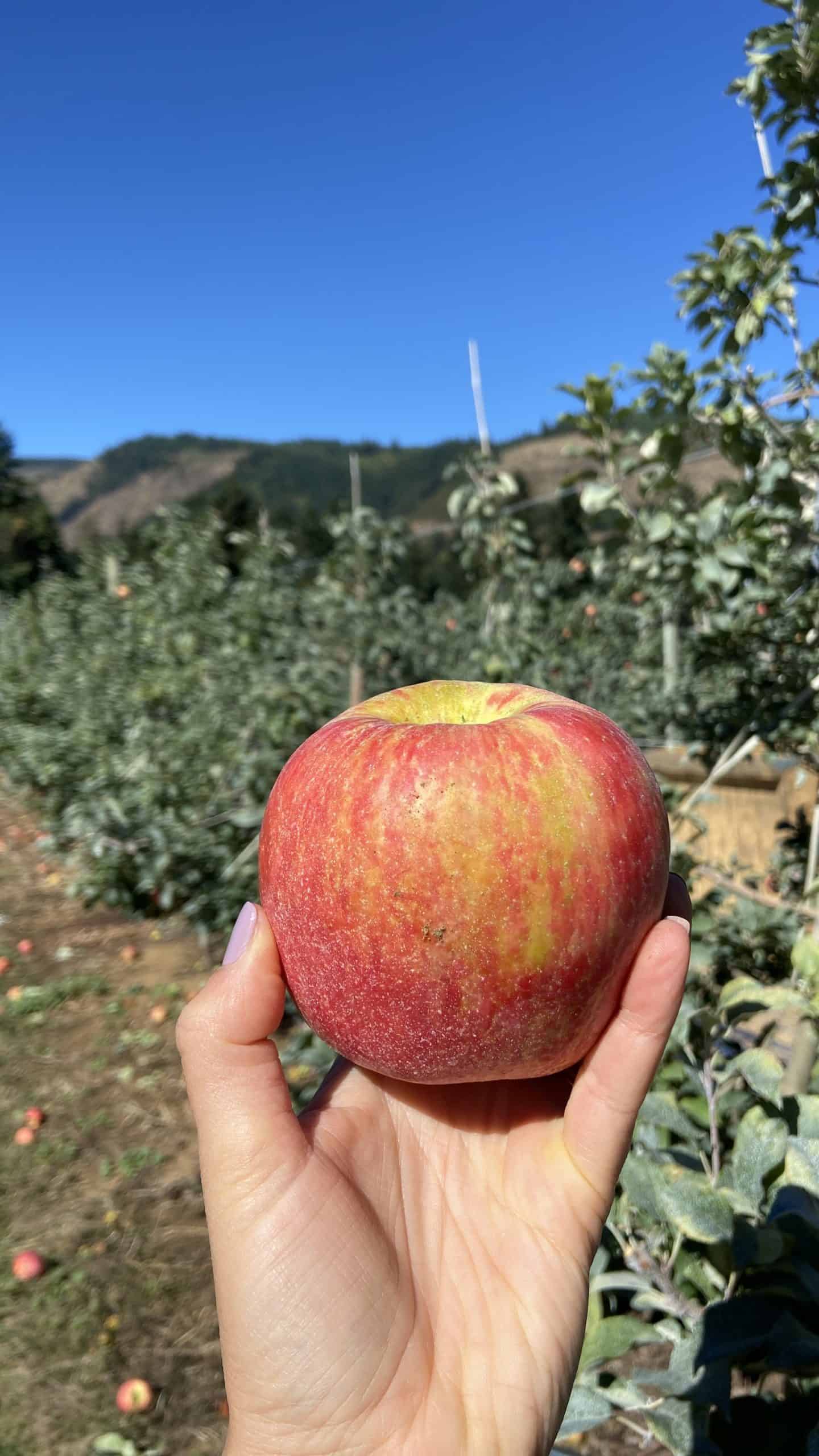
That is a lot of facts about farming, I know, but I hope by sharing this you feel much more confident in the safety of both conventional and organic food. In my opinion, they are both good options, but you absolutely do not have to buy organic to have safe, healthy, nutritious food.
If you still need more to believe that conventional is A-OK, try using the Pesticide Residue Calculator at SafeFruitsandVeggies.com. This tool will show you how much in quantity of a type of produce you could eat without any negative effect, even if the produce had the highest level pesticide residue ever recorded by the USDA. For example, a woman could eat 18,095 servings of carrots in one day without any effect.
Challenges Faced by Farmers
One of the many farmers I met on this tour made the following statement: "Conventional verses organic is NOT the biggest issue; it's supporting farmers!"
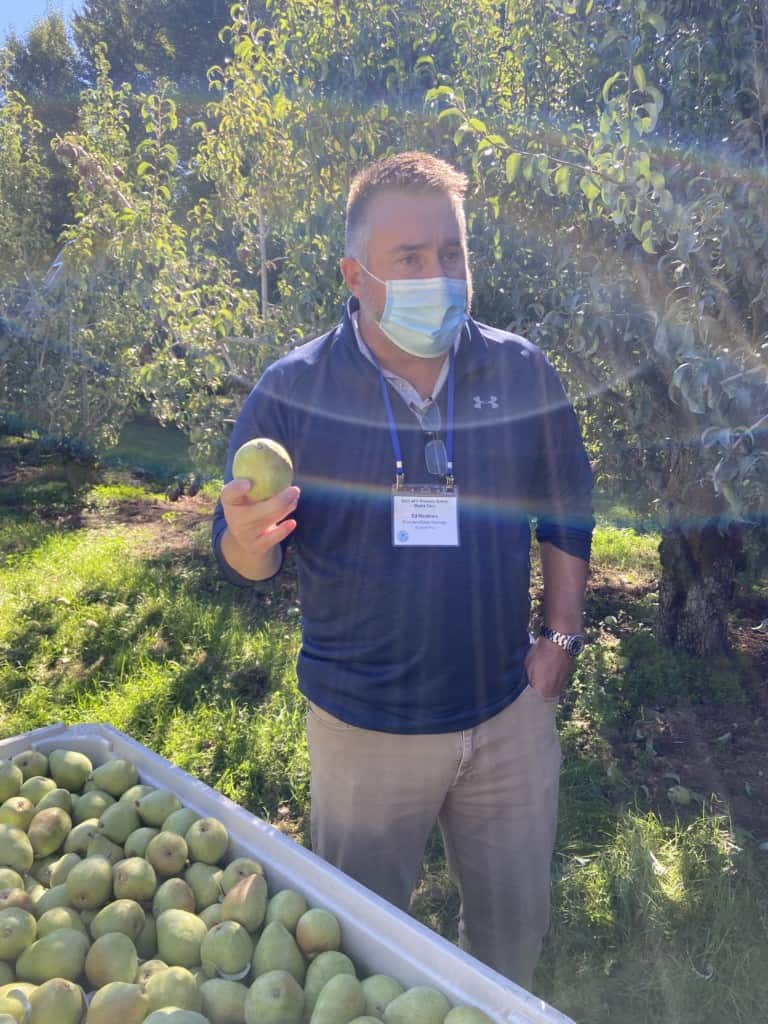
What this man was trying to convey is that farming is hard, not just in manual labor but in all the other areas of laws/regulations, labor, cost and the environment. Farmers need the support of our dollars and our votes to help them be able to continue to do their work of feeding people.
Here are some specific statements from farmers on this trip about the challenges they face:
- New regulations and laws take a lot of time to enforce because farming is a people business. Education is required. In many cases, the solutions to new regulations don't exist and they have to create solutions, which takes time and money.
- Every farm is unique and truly requires its own unique approach. New regulations often hurt smaller, family farms more than large farms. When it comes to environmental or labor related regulations, they sometimes sound better on paper than actually making an impact in the real world. When new laws and regulations are being drafted, farmers need to be involved to give input on how feasible they are to implement.
- Labor is one of the biggest costs a farmer has. Labor costs have risen 50% in the last 20 years and farmers eat that cost.
- Only 1% of Americans grow up in agriculture which means that the future of farming in the US is uncertain. Most farmers strongly agree that we do not want to be in a position as a country where we need to import the majority of our food. Exposing the next generation to agriculture and making it attractive financially to become a farmer are two important steps to help fix this.
- The cost of farming continues to go up yet farmers' margins are getting smaller. They need to be able to make more money to stay in business and this might drive up prices to the consumer slightly. One farmer encouraged, "Don't just buy what's cheapest; buy domestic."
- The weather and environment is a huge factor and farmers are very informed on the impact of climate change. Extreme weather impacts yields and price and consumers don't always get this.

I share this all with you because after doing farm tours on both the east and west coasts of America, I find farmers are saying about the same thing. They are at risk of going extinct unless we as consumers act to support them with our dollars and votes.
Innovations in Growing Food
One of the most exciting areas I learned about on this trip was the advancements that have been made in agriculture to grow food smarter, safer and healthier. Here's what I mean:

- The #1 biggest improvement farmers have made in the last 10-20 years is in better irrigation practices. Thanks to technology they know exactly how much water is being used, if any is wasted or running off (which it doesn't seem to be at all), and how to use it the most judiciously. In some case, water use is being being adjusted hourly.
- Fruit is grown very differently now to maximize space and yield. Pruning practices, planting techniques and dwarf size root stock all enable farmers to grow more densely. For example, an apple orchard that used to have 600 trees/acre now has 2100 trees/acre.
- Technology is being used in every step of food production for good! It's incredible the kind of data and tracking information farmers have at their fingertips. It's becoming a very sophisticated operation.

Biggest Take-Aways
Of all that I learned, experienced and saw on this trip I am taking away a few big keys that I think are important for all of us.
- The produce produced in the US is very safe. Both conventional and organic produce are excellent options and you shouldn't think one is better than the other. There is room and need for both types of farming and both systems are using sustainable practices.
- US farmers are working so hard, every day, to produce safe, healthy and quality food. They not only have a deep sense of doing what is right for people and the planet but are also held to a very high standard by government regulations and laws.
- Keep in mind that new regulations impacting agriculture can sometimes sound better on paper than they actually work in real life for our farmers and food system. This is a big blanket statement, I realize, but something to think about as you process soundbites in the media.
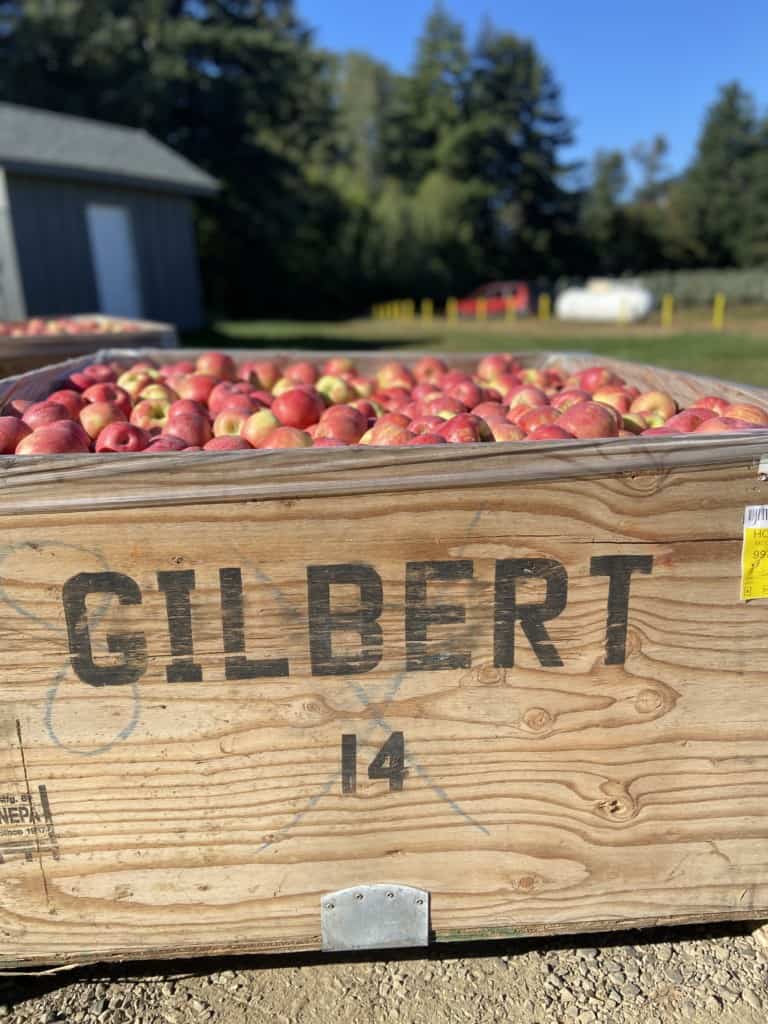
Ways to Support Farmers
Supporting farmers sounds really delightful, but what does that actually mean? I would not call myself on an expert on this topic at all, but I have picked up some practical ways to support farmers from the several farms tours I have been on.
- Buy domestic produce as often as possible. Check the packaging to see where it is coming from.
- Buy produce that is regional to you when you can.
- Ask your food stores to carry domestic, regional and/or local produce.
- Support the businesses of farmers that gives money directly back to them like farmer's market booths, CSA's, farms stand, direct ship to consumers, you-pick, merch and product sales, and restaurants/stands/food trucks. These are FUN ways to support them and their entrepreneurship. (See below for places to shop.)
- Reject the idea that organic produce is the best. Enjoy all types of produce and know that it's all safe and good.
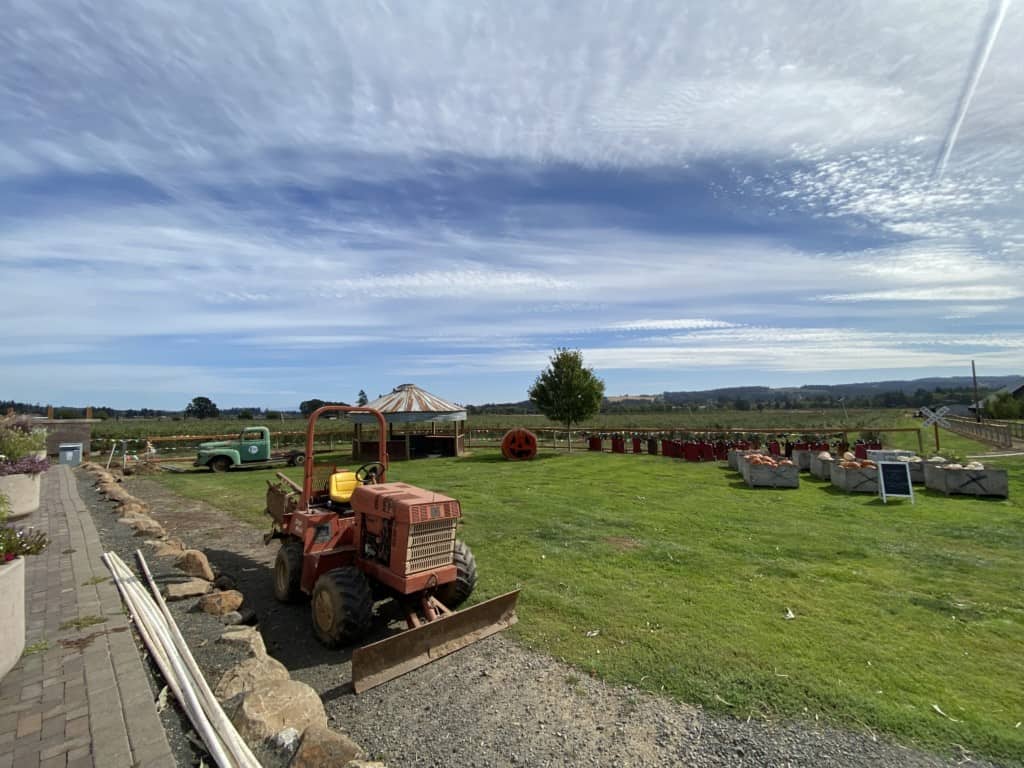
If you'd like to support some farmers around the country, check out these that I have visited or heard about.
McCarthy Family Farm - I visited this delightful farm and was thrilled to learn they ship pears directly to you! BUT, the best product they offer IMO is their Farm Club annual membership where you get 4 deliveries in the year - apples, pears, holiday wreath and PEONIES! Peonies are my favorite flower and they are damn near impossible to get in Florida. Use the code: FRIENDS2021 for $10 off your membership. Sign me up!
Five Mary's Farms - This family run ranch just seems incredible. I started following them after the California fires of 2021 impacted their community. They send their meats directly to your door, can educate you on how to farm and ranch, and has all kind of fun goods to buy. Follow them on Instagram too for lots of fun.
Noble Citrus - This generation run family farm business does not sell directly to consumers but produces some top notch Florida citrus and blueberries to retailers. While this might seem more commercial of an option to support farmers, it's actually really helpful to buy their unique varieties of citrus fruit to increase the demand so they can grow more!












